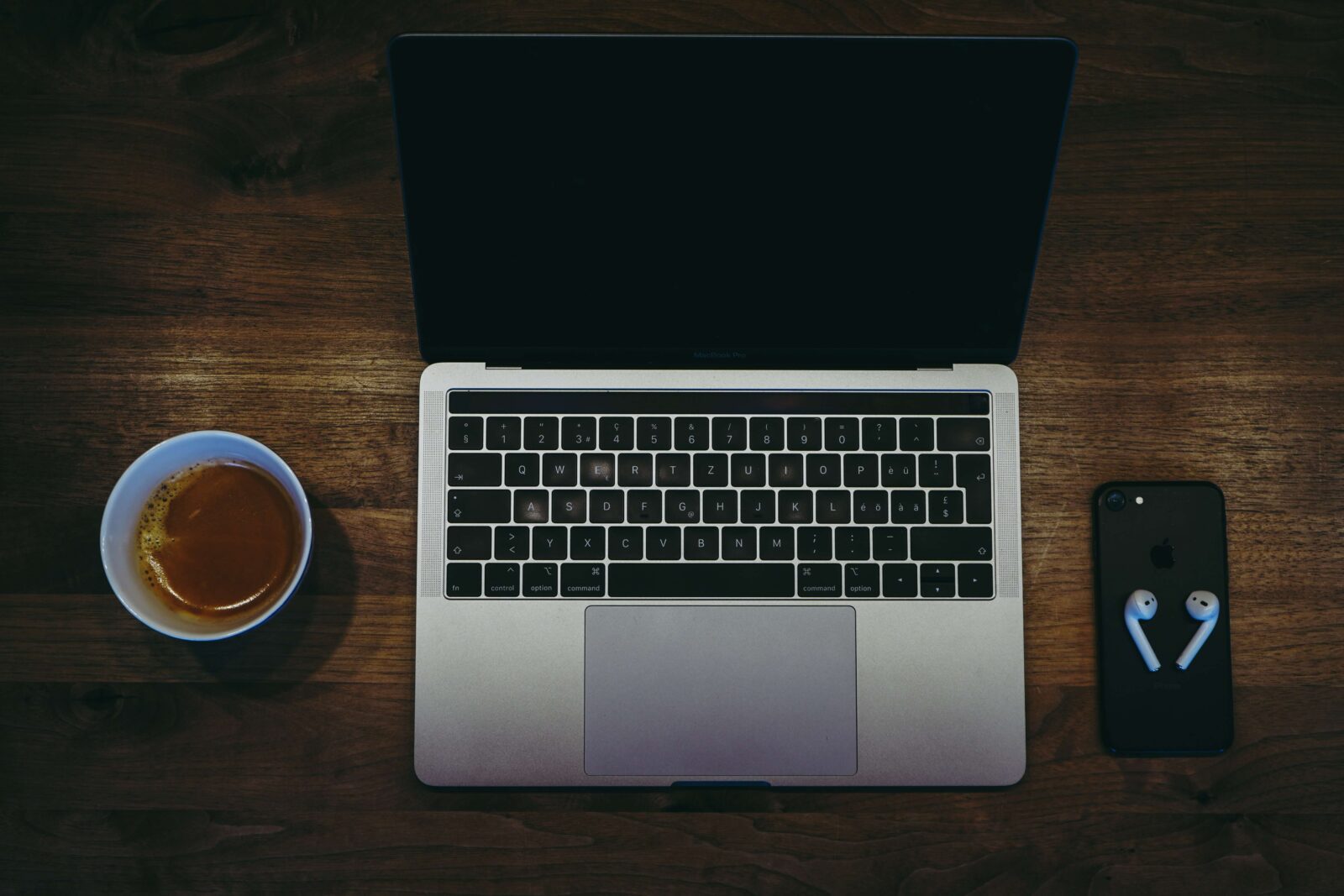It may seem that interviewing on video is a disadvantage, especially for the extroverts among us who are fueled by sharing the energy of others. But the virtual interview has its advantages, along with unique considerations for setting yourself up for making a personal connection and positive impression.
Of course, there are added pressures related to lighting, sound, Internet connection and/or technology concerns. Attention to both engagement and environment is a must, on top of the other vital MBA interview prep you’ll be conducting. Moreover, what to wear for the virtual MBA interview takes on special considerations, as my Fortuna colleague Karen Hamou covered in her popular post.
With so much at stake, what can you do to ensure the best possible conditions for a great video interview?
I’ve developed seven top tips for acing your virtual MBA interview, which includes excellent insights and ideas from my Fortuna Admissions colleagues.
7 MBA Video Interview Essentials
1. Embrace your ‘business mullet’ style.
I love this playful, honest emblem of our work-in-quarantine experience: the ‘business mullet’ or ‘mullet outfit’ is about formal on top, party on the bottom. Before you reach for your go-to Zoom Shirt, remember to keep your audience in mind and dress accordingly. Business casual should be the baseline, skewing business formal (suit jacket and tie for men, jacket for women) depending on your school or career interests. “As illogical as it may feel to suit up for a call in your living room, you will rarely feel awkwardly OVER dressed – but you may end up feeling awkwardly UNDER dressed,” writes Karen in her post on what to wear on video. “That said, the interview is a search for authenticity, so if wearing a tie would bother you to the point of distraction, go with your gut.” Karen emphasizes that you want to stand out for what you say – not what you wear – so save the big fashion statements for welcome week and err on the side of conservative in terms of clothing and personal grooming – at least from the waist up. (No one will be the wiser if you’re still wearing pajama bottoms.)
2. Stage your background.
Video is just as much about what you see as about what you hear. Make sure the space behind your camera is clear and uncluttered. Film yourself against a plain wall if possible, to keep the focus where it should be – on you. Any larger shot of your room in the background should be clean and organized. No passing people, animals or distracting piles of laundry in view. You can certainly have a small plant or small frame to give a bit of personality to your shot. If using Zoom, try experimenting with settings like choosing to “blur” your background or “touch up” your appearance.
“I’ll never forget a particular Skype interview from my days in UCLA Anderson Admissions,” reflects Jessica Chung, former UCLA Anderson Associate Director of Admissions. “I have no recollection now of who he was, what he said, or what he wore, only that I could not stop fixating on his messy, unmade bed in the background. That tidbit went into my writeup post-interview.” As with your attire, you want to be memorable for all the right reasons.
3. Give your face the best glow.
Set up a test beforehand to ensure your lighting is strong – not too bright or too dark. Position yourself to be facing the light to give the interviewer the best view of your face. Try moving your screen to different venues in your home to secure the best light; some clients use small light rings around their computer camera. I had a client that persistently looked sweaty, so I recommend some blotting papers at the pharmacy. As mentioned, if you’re on Zoom you can take advantage of the “touch up my appearance” feature (Settings > Video dialogue > “Touch up my appearance”). Speaking of glow, according to Stitch Fix, the three colors that work for everyone are blush, red and black, although you can consult their handy guide to find the colors that look best on you.
4. Fine-tune your technology.
Flawless Internet connectivity being a given, you’ll want to ensure you have excellent sound quality. Seek a quiet space and use earphones to improve sound (they can cut unexpected background noise). Your voice should be the only one that’s heard in the interview. Your voice should be clear and easy to hear while speaking at a normal pitch and volume. Make sure your computer settings are updated – Zoom, for example, makes frequent changes that require updating to function optimally. Test that your microphone is working properly and computer settings are updated for audio. And by all means, make sure the link works before you attempt to open it at the time of the call.
5. Play the home field advantage.
Jot down a few bullets or talking points or outline a quick structure, e.g., main answer and supporting examples. But avoid overly scripting – you want to appear fluid and natural on camera. “A big upshot is that you have the opportunity to place things outside your interviewer’s field of vision,” says Fortuna’s Sharon Joyce, former Berkeley Haas Associate Director of Admissions. “You can have sticky notes with keywords or messages on your wall. Just a couple of ‘cliff notes’ in the background to help you get unstuck if necessary.” That said, think a couple of post-it notes at eye level to refresh your memory or keep you focused; you do not want to read full sentences off a pre-prepared script or have your eyes darting about the room. The interviewer can tell if you are reciting, which will undermine your authenticity.
6. Convey confident body language.
While most candidates overfocus on what to say, how to say it – along with other nonverbal cues like maintaining eye contact – can have an even greater influence on the impression you leave with an admission gatekeeper. Eye contact is very important – while it is tempting to look at yourself on your screen, be mindful to engage the interviewer by looking at the camera instead. It’s is admittedly not easy to do. As you practice, inventory your visual rapport – from your posture and expression down to your breathing, gestures and energy. Don’t forget to smile: When you enjoy yourself, it shines through and makes a connection with the viewer (you’re on camera, after all). You can also choose to turn off self-view which can help to make you less self-conscious.
Play around with posture to see what’s most effective for you. Fortuna’s Jason Yeh is a fan of standing for more energy. Sharon is a big proponent of adding two minutes of power posing to your pre-interview ritual, popularized by HBS psychologist Amy Cuddy in her TED Talk. Not only is it a set up for a more effective interview experience, but research also shows it boosts your internal state by making you feel more powerful. As you do, visualize success. Ask yourself, what is the number one thing I want my interviewer to remember about me?
7. Record yourself and course correct.
Record yourself when you practice. What type of impression are you giving off? Are you friendly and approachable? Would others feel comfortable working with you? Have you managed to avoid excessive use of “um,” “like” and other filler words? If you’re fortunate enough to have more than one interview, subtly recording your experience will allow you to debrief. “For some of my clients who are especially worried, I’ve told them to tape their MBA interview on their iPhone,” says Sharon. “We’ll listen to it together, and I can give some really pointed feedback ahead of the next time they interview.”
Remember, one of the biggest advantages to interviewing from your own space is that you can create the conditions to feel more relaxed. (No one will be the wiser if you’re doused in soothing essential oils or the aroma of fresh-baked cookies.) Know that, this year in particular, many students are experiencing the same thing – so by no means will a business school penalize your application for participating in the interview remotely.
That said, do conduct the standard pre-interview rituals – identify your key selling points to deliver clear and concise answers, practice responding on camera to be as natural and confident as possible, and stay grounded to let your personality shine through.
Want More Advice?
Fortuna offers individual MBA interview prep, as well as HBS-specific and Wharton TBD group interview prep sessions. If you know what you want you can sign up directly online. You can also view substantive, actionable interview prep tips and insights by school at Fortuna’s MBA Interview Tips.
Let’s Get You In
At Fortuna Admissions, we’re a dream team of former admissions directors and seasoned MBA coaches from the world’s top business schools. We specialize in helping applicants craft compelling stories and maximize every part of the application process.
Book a free consultation to assess your candidacy and find out how we can help you get into your dream MBA program.




